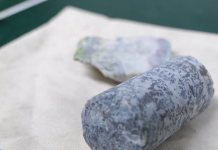DM Monitoring
NANNING: After traveling across China for years, South African architect Ian Hamlinton decided to settle down in an old village nestled in Yangshuo County of south China’s Guangxi Zhuang Autonomous Region, as he was drawn to the centuries-old structures there.
The architect, in his fifties, decided to create a “secret garden” of his own in the ancient village of Jiuxian whose history dates back to the Tang Dynasty (618-907).
When Hamlinton first visited the place in the winter of 2002, however, a number of the houses were dilapidated, but he was fascinated by the ancient courtyards and the lifestyle that was interwoven with the architecture.
He waited for eight years before he finally had a chance to renovate the buildings with his modern understanding. So far, he has spent most of his savings on a 20-year lease on six of the mud-brick houses.
Rammed earth walls that date back to the Tang Dynasty offer a glimpse into the colorful stories of the village.
“Every house has its own character, and I would like to take my time finding the character of each one of them,” Hamlinton said.
After nearly one year of renovation, his first village inn opened to the public in 2011, named “Secret Garden.” He integrated modern decoration with traditional Chinese characteristics, integrating abstract oil paintings and metal stairs into the courtyard with Oriental furniture, windows with carvings, and a goldfish pond. Hamlinton said he was further motivated by the elderly people in the village, who said they were delighted to see how the house had regained its former shine. Located outside the main town of Yangshuo whose reputation as a scenic rural haven has long attracted sightseers and backpackers from around the world, Jiuxian Village is within walking distance of the Yulong River, a bucolic waterway flanked by karst mountains.
In 2012, Jiuxian was included in China’s directory of traditional villages with 645 others across the country. Later on, restoration and protection of the ancient houses in Jiuxian was launched by the local government.
More than 8 million yuan (about 1.16 million U.S. dollars) was spent on renovation, according to the local culture and tourism bureau.
“The renovation should maintain the original layout of the architecture so that protection is put first and this is exactly what Ian has done, and we have learned a lot from his experience,” said Zhu Fanghui, the village’s Party chief.
To date, more than 40 ancient houses in the village have been repaired, and the renovation has also attracted more tourists as well as local young people who returned for a new job opportunity.





